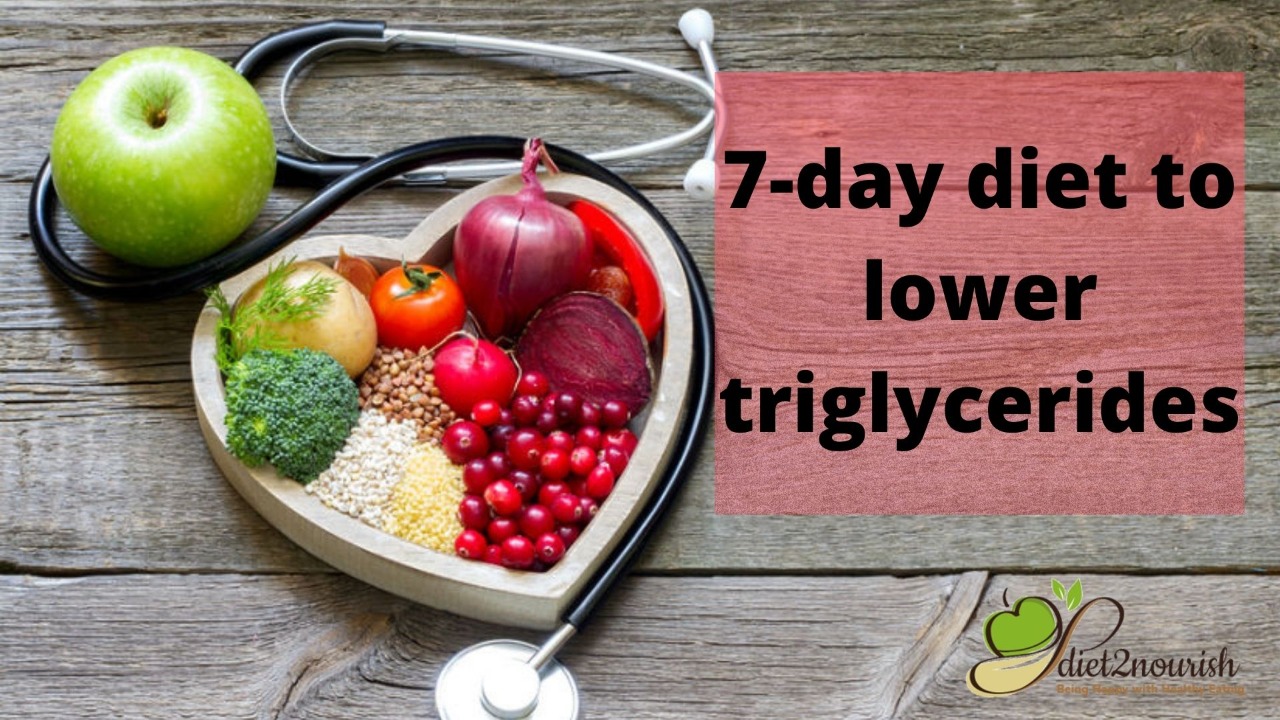Triglycerides are a type of fat found in the blood that can increase the risk of heart disease when levels are too high. High levels of triglycerides can be caused by a range of factors, including genetics, diet, and lifestyle choices. In addition to medical treatment, following a specific diet plan can help to lower triglyceride levels and reduce the risk of heart disease.
Here is a sample 7 day diet to lower triglycerides
Day 1:
Breakfast: Oatmeal with sliced almonds, berries, and almond milk.
Snack: Apple slices with almond butter.
Lunch: Grilled chicken breast with a mixed greens salad topped with avocado and olive oil vinaigrette.
Snack: Carrots and hummus.
Dinner: Baked salmon with roasted Brussels sprouts and brown rice.
Day 2:
Breakfast: Greek yogurt with mixed berries and a sprinkle of chia seeds.
Snack: Whole grain crackers with low-fat cheese.
Lunch: Quinoa salad with grilled vegetables and chickpeas.
Snack: Roasted almonds.
Dinner: Grilled shrimp skewers with mixed vegetables and sweet potato fries.
Day 3:
Breakfast: Scrambled eggs with spinach and whole wheat toast.
Snack: Sliced cucumbers with tzatziki sauce.
Lunch: Tuna salad with mixed greens and a lemon vinaigrette.
Snack: Fresh berries.
Dinner: Grilled chicken breast with roasted root vegetables and quinoa.
Day 4:
Breakfast: Whole grain pancakes with fresh fruit and maple syrup.
Snack: Celery and almond butter.
Lunch: Turkey wrap with avocado, lettuce, and tomato.
Snack: Air-popped popcorn.
Dinner: Baked cod with roasted asparagus and quinoa.
Day 5:
Breakfast: Smoothie made with Greek yogurt, mixed berries, and spinach.
Snack: Apple slices with low-fat cheese.
Lunch: Black bean soup with a mixed greens salad.
Snack: Trail mix.
Dinner: Grilled chicken breast with roasted vegetables and brown rice.
Day 6:
Breakfast: Whole grain English muffin with scrambled eggs and avocado.
Snack: Roasted chickpeas.
Lunch: Grilled chicken breast with a mixed greens salad topped with walnuts and a balsamic vinaigrette.
Snack: Fresh fruit.
Dinner: Baked salmon with roasted broccoli and quinoa.
Day 7:
Breakfast: Whole grain toast with almond butter and sliced banana.
Snack: Carrots and hummus.
Lunch: Lentil soup with mixed greens salad.
Snack: Low-fat Greek yogurt with fresh berries.
Dinner: Grilled chicken breast with roasted sweet potatoes and asparagus.
In general, a diet to lower triglycerides should be rich in fruits, vegetables, whole grains, lean proteins, and healthy fats. It is also important to limit or avoid foods that are high in saturated and trans fats, added sugars, and refined carbohydrates, as these can increase triglyceride levels. In addition to following a healthy diet, regular exercise, stress management, and smoking cessation can also help to lower triglyceride levels and reduce the risk of heart disease.
It is important to note that individual dietary needs may vary based on factors such as age, gender, weight, and medical history. It is recommended to consult with a healthcare professional or registered dietitian to determine the best dietary plan for lowering triglycerides and improving overall health.